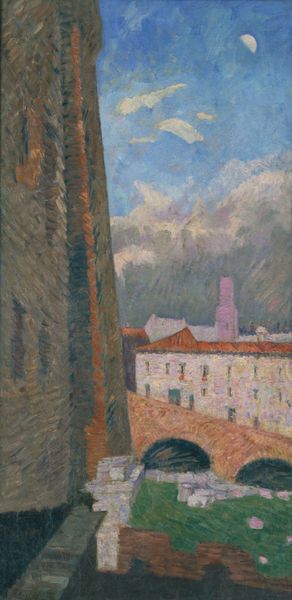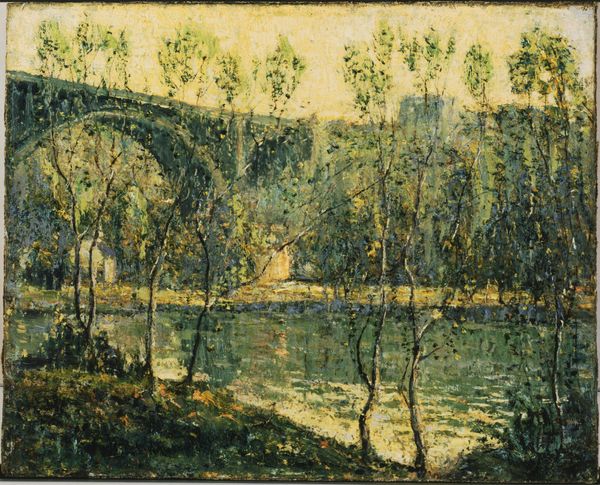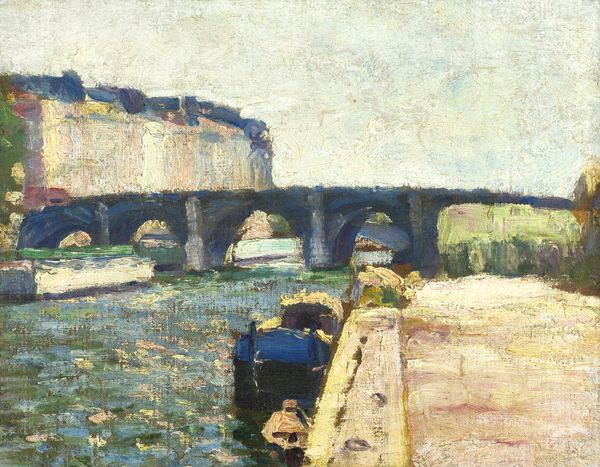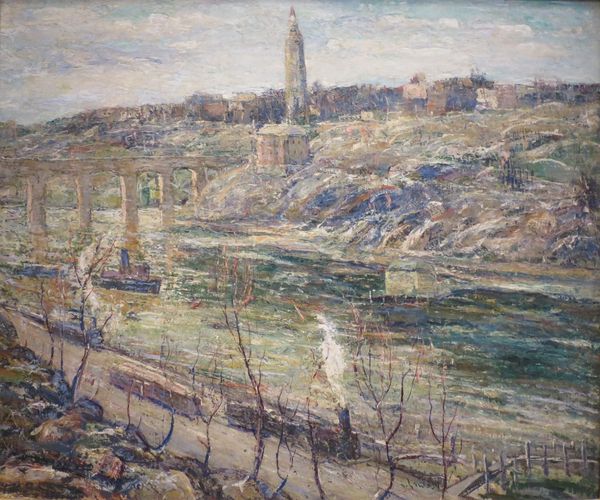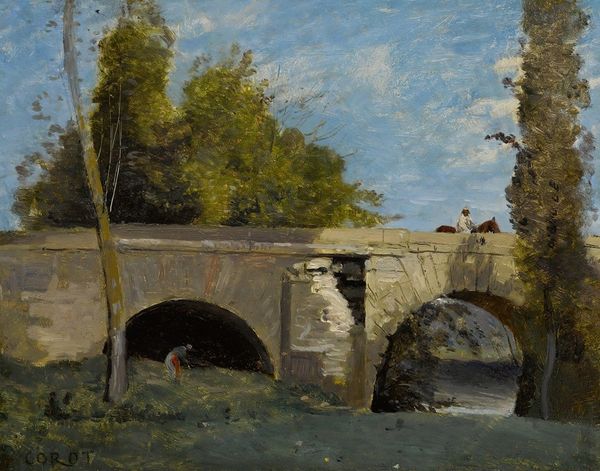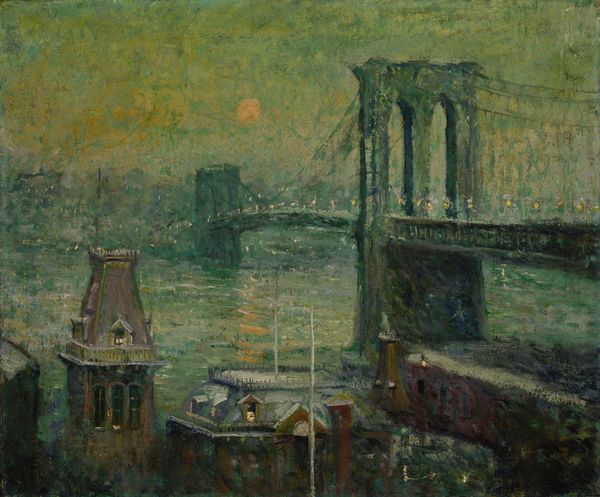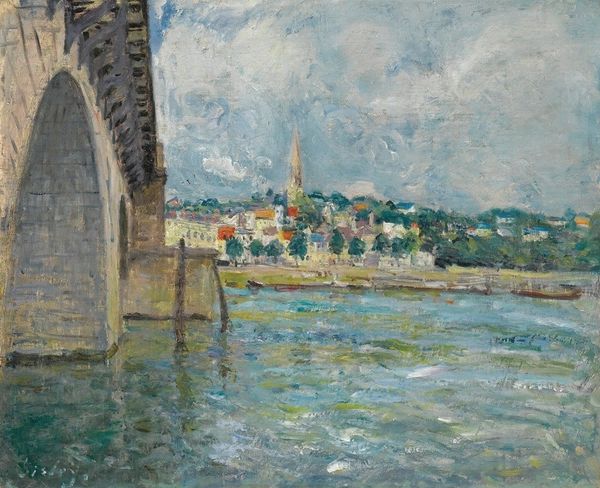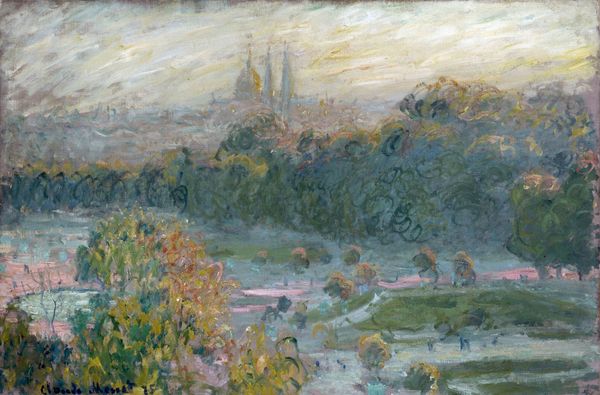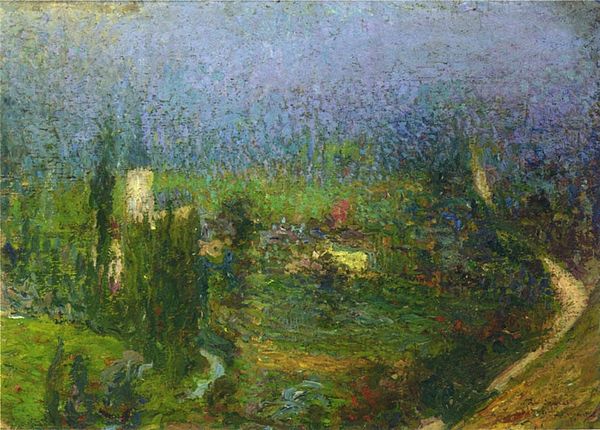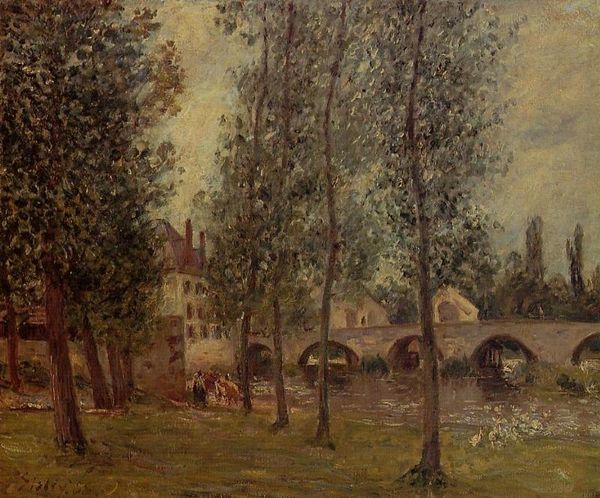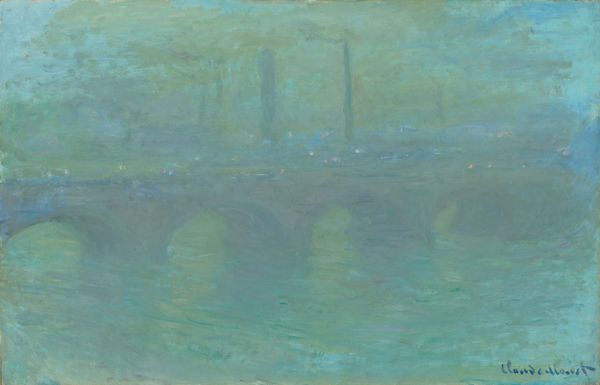
Dimensions: overall: 63.5 × 76.2 cm (25 × 30 in.)
Copyright: National Gallery of Art: CC0 1.0
Curator: Here we have Ernest Lawson's oil painting, "High Bridge at Night, New York City," created sometime between 1910 and 1920. It’s quite an evocative cityscape. Editor: My initial impression is of quiet melancholy. The pervasive green-gray palette creates a muted atmosphere, almost as if the city is holding its breath. It is a dreamscape in green and gray. Curator: That melancholic feel is interesting, especially considering Lawson's place within the Ashcan School movement, known for its gritty realism. This bridge, which looms behind the lights along the walkway and towers in the skyline, wasn’t simply a structure. It was infrastructure, technology, and represented modernity. But there are few figures to see this in this image. Editor: The lights strung across the bridge look like a necklace, each bulb a tiny glimmer of hope against the somber backdrop. But they do also look like lonely sentinel guarding some deep truth. Also, it does have that painterly quality, heavy brush strokes of Impressionism to bring modernity and dreamscape together. It's a compelling, almost haunting composition. Curator: Absolutely. The Ashcan School, while documenting the urban experience, also indirectly criticized societal inequalities through their art. Lawson here depicts this scene that, at first glance seems beautiful, and reveals a hidden layer, subtly suggesting an isolating presence even amidst the supposed advancement. Editor: Do you think he selected green for that reason? To make something both hopeful but ultimately lonely? Or perhaps there is a certain association here? Curator: It’s certainly possible. We should be careful not to assume anything about the artist, and appreciate that the viewer is perhaps invited to make an opinion themselves. Editor: Point taken, sometimes a bridge is just a bridge! Ultimately I love it though: A lonely figure taking respite on the way across a man-made wonder of an era that seemed just as overwhelming as our own must be. Curator: Indeed. Lawson provides not just an image of New York but prompts considerations of societal aspirations of an early period, captured in a fleeting moment.
Comments
No comments
Be the first to comment and join the conversation on the ultimate creative platform.

